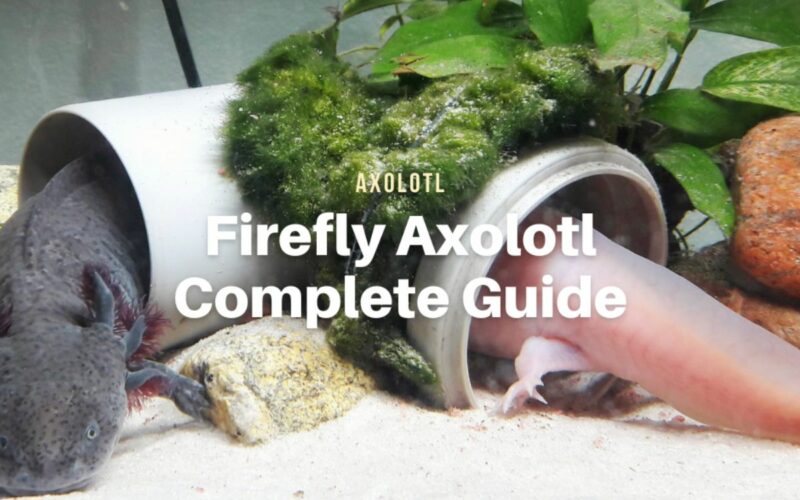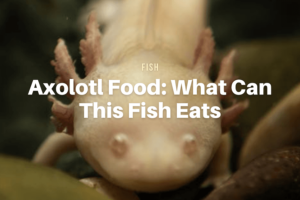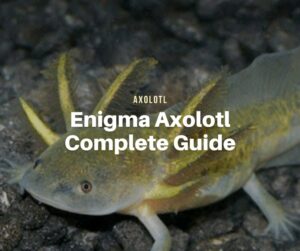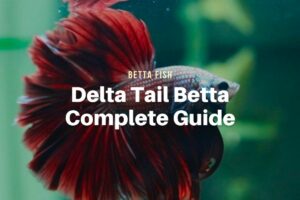Axolotls are not only cute, but they are also fascinating creatures. This is especially true for the firefly axolotl. Their colors are beautiful. Due to their origin, they are quite rare as well. As fascinating as they are, these lovely creatures are not easy to take care of.
It is a good idea to get to know them before deciding to keep one as a pet. Well, you come to the right place. Here, we tell you everything you need to know about the fire variant. From its origin, how the variants came to be, aquarium setup, food, and diet, to how much it costs.
Firefly Axolotl Origin
Let’s start with their origin. Axolotls are native to some lake systems in Mexico. The firefly variant, however, doesn’t exist in nature. Initially, the firefly variants were artificially developed by Lloyd Strohl as part of his studies on the animal.
Fireflies are a unique morph made by a process known as embryonic graphing. To put it in simpler terms, they were by fusing embryos. Some people believe that the fireflies were created by cutting a tail of a hatchling and then reattaching it to another hatchling that has a different color. This is a misconception.
The variant is made in a laboratory. In other words, fireflies are man-made. This is why they are very rarely available. Their rarity is one of the reasons why many people would like to keep them as pets.
In terms of appearance, no fireflies look the same. Despite their unique appearance, they share something in common. Namely, they tend to be a combination of two colors, one dark and one bright. Their tails grow bright in the dark, hence the “firefly” name.
Apart from their unusual origin and colors, firefly variants are pretty much the same as their wild counterparts
How Are Firefly Axolotls Made?
They are made by embryonic graphing. The tail-switching process does happen. However, it doesn’t happen when the animals are hatchlings. Rather, it happens at the embryonic stage. At this stage, they can’t feel pain yet.
When fireflies hatch, they will have different tail colors. They won’t realize the difference caused by the tail switching, so there is nothing to worry about.
Speaking of embryonic graphing, the process is not new. In fact, it is a widely used process in limb regeneration studies. While the process is fine for research purposes, many people are concerned when it comes to using embryonic graphing in creating pets like the firefly variant.
Aquarium Setup for Firefly Axolotl
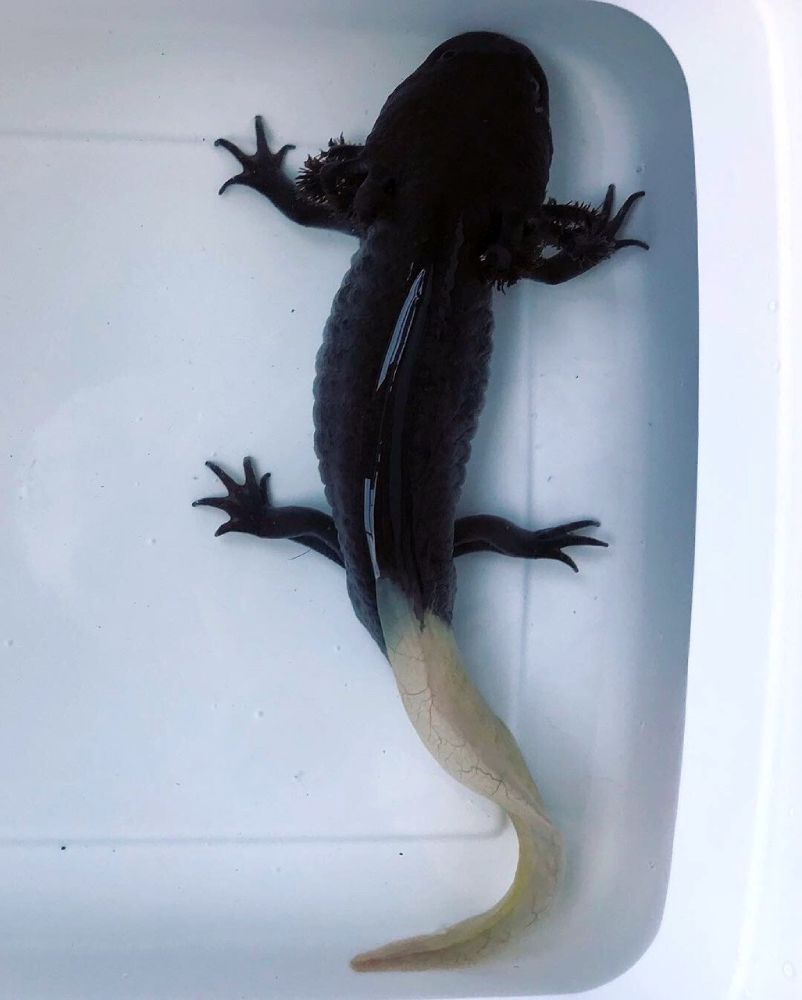
Aquarium
For axolotls, a bigger aquarium is always better. A 29-gallon tank is the bare minimum for a firefly. If you can get a 40-gallon tank, then it is even better.
These aquatic animals grow very quickly. As such, it is better to get a fitting aquarium from the start. Not to mention that they produce a lot of bio-waste. Having a sizable aquarium will help to dilute it, keeping water parameters in the tolerated range.
Speaking of bio-waste, you need to keep the nitrate level below 20 ppm at all times. With a firefly in the tank, the level of nitrate will increase consistently. A larger tank can accommodate more water. With more water in the tank, the bio-waste becomes more manageable.
Ideally, the tank is longer than wider. Fireflies like to roam the floor space, so it is best to go with a long tank. They can also jump, so the aquarium water level shouldn’t be too high. Using a lid is a good idea, too.
Substrate
Fireflies will eat whatever can fit their mouth. The aquarium substrate is no exception. So, when it comes to a substrate, avoid using a loose substrate. A loose substrate increases the impaction risk.
You can use gravel for your tank. Just be sure that it is at least as large as your firefly’s head. This way it will not ingest the substrate and cause impaction.
For 6-inch or larger fireflies, you can use soft and fine sand as the substrate. The grain size shouldn’t exceed 1 millimeter. A substrate this size will get ingested, but it will pass through the firefly safely without causing any harm.
Don’t use sand as the substrate if your firefly is smaller than 6 inches or if it is younger. It will ingest the substrate like a larger firefly does, but the fine sand might get stuck and cause impaction.
The safest substrate is rocks. Use only rocks that are larger than your firefly’s head so it won’t ingest them.
Alternatively, don’t use any substrate at all. A tank without substrate might look boring, but it is much easier to manage. Your firefly won’t have any problem with a substrate-less tank, either. Plus, you can make the tank more appealing by adding some tiles to it if you don’t fancy a bare tank.
Habitat
To keep your cute aquatic companion healthy and happy, you need to provide it with a comfortable and enriching environment. The good news is you can do this in many ways. For example, you can add hiding spots in the tank.
Live plants make a nice addition to a firefly tank, too. Do realize that your plant options are limited. Fireflies are sensitive to light. If you want to add live plants, choose aquatic plants that are fine with low lighting and low temperature.
Also, since you can’t use any fertilizer with a firefly in the tank, it is best to go with low-maintenance live plants that don’t require supplementation.
Decorations
You can decorate a firefly tank however you want. Just make sure that there is no sharp surface or object in the tank. While fireflies can heal from injuries and even regrow a lost limb, they can feel pain. Avoid adding any decoration that may harm your firefly.
Fireflies love hiding spots. They are shy creatures, after all. If possible add some into the tank so your firefly can hide whenever it wants.
Live plants make great decorations, too. You will love seeing your cute salamander roaming around the greeneries. It is a sight to behold.
Aquarium Cycling
Having a fully cycled aquarium is a must. If you want to keep a firefly axolotl but don’t have a fully cycled aquarium yet, just wait until you have it. The cycling process takes 4 to 12 weeks. It will be worth the wait.
Water Changes
There is no denying that fireflies are messy creatures. How could they not? They produce a lot of bio-waste and pollute the water rapidly.
Keeping a firefly means there will be frequent water changes. You will need to change the water every week to keep the nitrate level below 20 ppm at all times. You will also need to monitor the water parameters as ammonia spike is a common issue.
Water Conditioner
Every time you add new water to the tank, you have to use a water conditioner. Note that not all conditioners are suitable for a tank with a firefly in it. You want to use a conditioner that doesn’t contain aloe vera and iodine as they are toxic to the animal.
Water Quality
In terms of water quality, the tank must have <20 ppm nitrate, 0 ppm nitrite, as well as 0 ppm ammonia at all times. The pH should be in the 6.5-8.0 range.
Temperature
The water temperature should be anywhere between 60 and 68 degrees Fahrenheit. If the temperature is higher than 68 degrees, your firefly may be stressed or develop a disease.
On the other hand, if the temperature is lower than 60 degrees Fahrenheit, it will slow down the firefly’s metabolism. It might not be an issue if it only happens temporarily. But if it happens for long periods, it could lead to various health issues.
Food & Diet
The food & diet of fireflies is quite simple. These amphibians are carnivores. They like to have worms, small fish, insects, and live or frozen food in their diet. They are not picky eaters.
You can offer your firefly bloodworms, frozen brine, lean beef heart, red wigglers, and other food to keep them happy and healthy.
In their natural habitats, their diet consists of worms, small fish, freshwater insects, and crustaceans, among others. To put it in other words, they eat what they can put into their mouth. They are also cannibalistic. If there is no food available, they will eat each other.
While these cute salamanders are not picky eaters, you should never give them vegetarian food. They are carnivores. As such, they won’t eat vegetables. Overfeeding can be a problem as well. It is fun to feed a firefly but do understand that it needs time to digest food.
Feeding Schedule
What about feeding frequency? Your feeding schedule depends mainly on what stage of life the firefly is in. Young fireflies need to be fed daily. Adults don’t need as frequent feeding. They will be just fine with being fed 2 to 3 times a week.
The best way to feed a firefly is by using forceps. Use the forceps to grab the food then gently drop it in the water nearby. Size the food proportionally so your little aquatic friend can eat the food easily.
Below is a detailed feeding schedule you can follow.
| Size | Stage of life | Feeding frequency | Recommended food type |
|---|---|---|---|
| < 1 inch | Hatchling | 2 times per day | Baby brine shrimp |
| 1.5 to 3 inches | Baby | 2 times per day | Frozen bloodworms, blackworms |
| 3 to 5 inches | Juvenile | 1 time per day | Worms, pellets, gel food |
| 6 to 8 inches | Sub-adult to adult | Every other day | Worms, pellets, gel food |
| > 8 inches | Adult | Every 2 to 3 days | Worms, pellets, gel food |
The younger the firefly is, the more frequently it eats. This shouldn’t be surprising. After all, the animal is still growing and has yet to reach adulthood.
When a firefly reaches adulthood, its feeding frequency is decreased significantly. While young, it needs to be fed 2 times a day. When it is an adult, it only needs to be fed every 2 to 3 days.
How Much Food Should You Feed an Axolotl?
There is no exact number when it comes to the amount of food you should feed a firefly. There is no absolute rule to follow. Until it reaches the juvenile to adulthood stage, most breeders recommend feeding the animal as much as it will eat at a time.
To figure out the ideal amount of food, offer food until your firefly refuses. Take note of this. When it refuses food, remove uneaten food from the tank at the end of the feeding time.
If you feel your firefly hasn’t eaten as much as it should, you can increase the amount of food gradually. This will take time, but eventually, your firefly will get used to more food. After a while, you will figure out the ideal amount of food for your firefly.
Feeding an Axolotl
Knowing how to feed a firefly axolotl is also important. Axolotls have very poor eyesight. They mostly rely on their sense of touch and vibrations. Keeping these in mind will make the feeding session easier.
Feeding with Worms
Worms are a good food source as they are high in protein. Feeding them to a firefly can be a bit of a challenge, though.
To feed worms to a firefly, you can drop the whole or chopped worms over its head. Your firefly should feel them and eat them. This could be messy if your firefly doesn’t immediately eat the worms. Plus, you may have to touch the worms, too.
The alternative is to use feeding tongs. Grab the worms with the tongs and wiggle them around your firefly’s mouth. If it misses the worms, you can retrieve them and try wiggling them again.
Feeding with Pellets
Compared to worms, pellets are much more convenient. They are less messy and don’t involve any of the hassles of live or frozen foods come with. Not to mention they are widely available, too.
To feed pellets to a firefly, you can use feeding tongs. While tongs make it easy, they are not suitable for smaller pellets. You can also drop pellets over your firefly’s head and hope it will eat them.
Some people use a feeding dish. A feeding dish keeps pellets from getting messy. It is not the easiest feeding method, however. It takes some time to train a firefly to eat from a dish.
How Much Does a Firefly Axolotl Cost?
When it comes to the price of an axolotl, there are three determining factors. The first factor is the type or variant. As explained earlier, the firefly variant is man-made. They don’t occur in nature. This makes them quite a rare variant.
The second factor is location. By location here we mean the location where you are. Buying locally is almost always less expensive than buying internationally.
The third factor is from whom you are buying the animal. Some places might offer cheaper prices than others. If you decide to buy, make sure to buy the animal from an experienced breeder. That way, you are more likely to get a reasonable price.
As for the price range, a firefly variant typically costs between $200 and $350. The common variants cost only $30-50, which shows how expensive the firefly variants are. The high price tag is understandable though, considering how rare they are.
If you are considering keeping one as a pet, make sure to prepare some money not only to get the animal but also for preparation, feeding, and maintenance.
A firefly axolotl is an amazing pet. It is cute and beautiful. Taking care of it is not easy, though. It requires extra effort, time, and money on your part. Plus, you have to have a bit of experience in taking care of pets in an aquarium. It takes a lot but is a rewarding experience.
